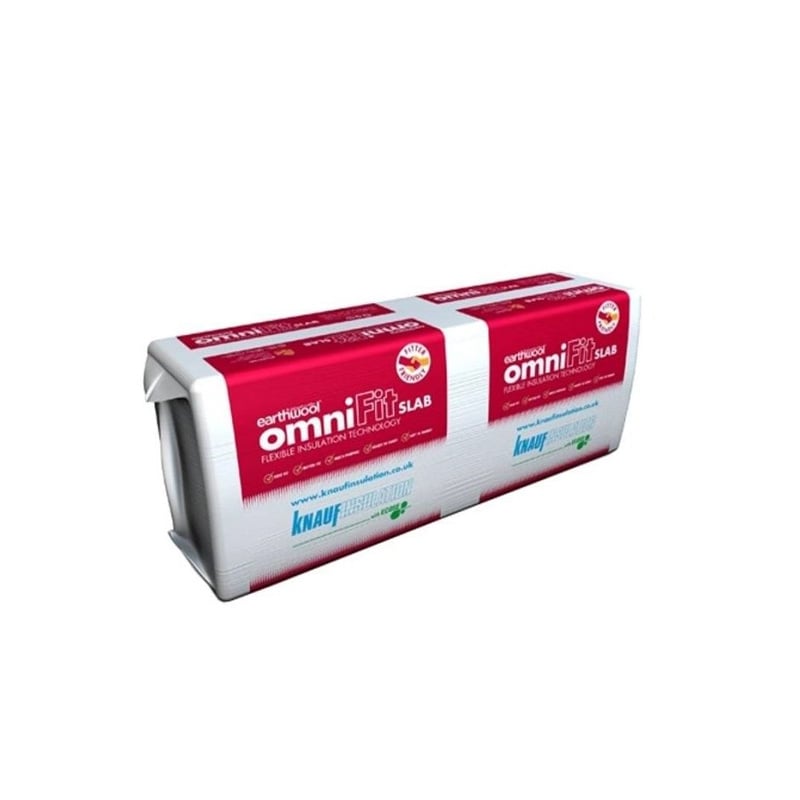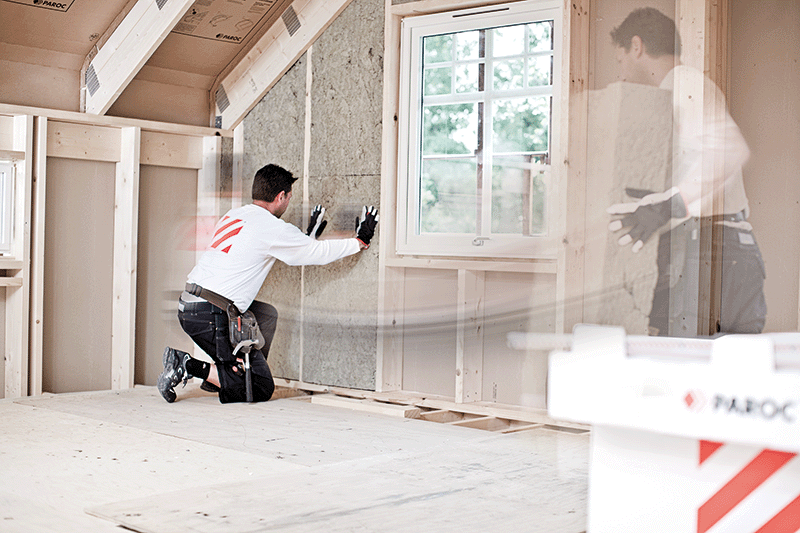Lambda: λ
One of the most important parameters of mineral wool which determines its quality, thickness, and price is the so-called Lambda λ. This is the coefficient of thermal transmittance expressed in Si units as λ=W/(m*K) where W is Wat m-meter K-Kelvin. It tells us how much thermal energy is able to pass through a given thickness of material in a given time. An important point to remember here is the lower the Lambda the better. We can then use a thinner material that will perform as well or better than a thicker material with a higher lambda. In the case of the highest quality products, λ=0.030.
Density:
Another parameter that we may encounter in the technical documentation of a mineral wool product is density. Density is expressed in Kg/m3. In the simplest terms, this parameter tells us how much structural material, i.e. mineral fibers, is in a certain space of the finished product. It has a major impact on the structural properties of the material, such as compressive or tensile strength and on the point load to which we can subject our material. It is also of considerable importance when it comes to the weight of the finished product. Typical density for stone wool ranges from 20kg/m3 to 180kg/m3.
For glass wool it is 10 kg/m3 to 150 kg/m3.
The density of rock wool directly translates into the thermal conductivity of the material because as we already know from the previous subsections, the air trapped between the rock fibers is responsible for the insulating capacity of the wool.
Point load:
One of the parameters you may come across when reading the technical documentation of mineral wool is the point load. This parameter results, so to speak, directly from the density of mineral wool. We can assume that denser products, i.e. with a greater number of fibers in a given unit of volume, can be subjected to a higher point load. In detail, the methodology of attestation of the material is regulated by the PN-EN 12430 standard. The test consists in measuring the force we apply to an area with a diameter of 79.8 mm so that the material sample deflects by 5mm.
Roof mineral wool can carry loads from 200-700N (10N=1kg).
Dynamic stiffness:
Dynamic stiffness is a parameter that tells about the absorption of energy due to the application of a force of an impulsive nature, so-called impact. This parameter has a direct bearing on the acoustic qualities of mineral wool, which is important, for example, with floating floors.
Mineral wool has dynamic stiffness values from 5-50 MN/m3.
Compressive strength:
Compressive strength is a parameter that tells us how much maximum pressure (in kPa) we can subject a material sample to before it fails, i.e., permanently deforms.
Compressive strength for stone wool board is up to 100 kPa.
Compressive strength for lamellar rock wool board is up to 400 kPa.
Tensile strength:
Tensile strength gives us the force that must be applied so that the material undergoes permanent deformation i.e. stretches so that it does not return to its original size. This happens when the so-called elastic point is exceeded, beyond which the fibers are permanently torn. The extreme state is complete rupture of the material.
The unit is kPa.
Shear strength:
Shear strength is a parameter expressed in kPa telling about the force applied along the panel causing it to break between planes. The parameter is very important especially for facades where there is a shear load caused by the plaster layer.
In the case of lamellar rock wool, it is up to 300 kPa.
Formaldehyde:
In the technological process of mineral wool production, the produced fibers are mixed with a grafting agent, known as a binder, in order to bond them before the pressing process. The grafting agent in most cases is urea-formaldehyde resins. Formaldehyde is a preservative used widely in the cosmetics industry, and a disinfectant. We can find it in mascara, nail polish, deodorants, etc. We can also find it in many industrial products such as varnishes, veneers and anti-foaming agents. Formaldehyde is toxic to the liver, skin and respiratory, immune system.
Therefore, many mineral wool manufacturers are modifying the technological process to minimize or even completely eliminate the presence of formaldehyde in the product.
Acoustics:
Alpha w- αw(weighted sound absorption coefficient) – an index, expressed using a single number, describing the absorption of incident sound waves on a surface at random, determined in accordance with EN ISO 11654. In this method, for values measured in accordance with EN ISO 354 and EN 16487, the absorption for the octave-width band for frequencies of 250, 500, 1000, 2000 and 4000 Hz is calculated, which is recorded in the form of a graph. A calibration curve is then applied to the graph, which is gradually approximated by the curve resulting from the measurements until a “best fit” is obtained. The resulting alpha w value will range from 0.00 to 1.00 and will always be a multiple of 0.05. The alpha w may be 0.65, for example.
Wool with veil:
A layer of glass veil stiffens the panels and prevents air from being blown out of the wool structure by air moving through the ventilation space.
Lamellar wool:
In lamella wool, the fibers are arranged perpendicular to the plane of the board, which makes such a board more flexible and better adapted to the wall. In addition, such an arrangement of fibers makes the board more resistant to compression and stretching.


